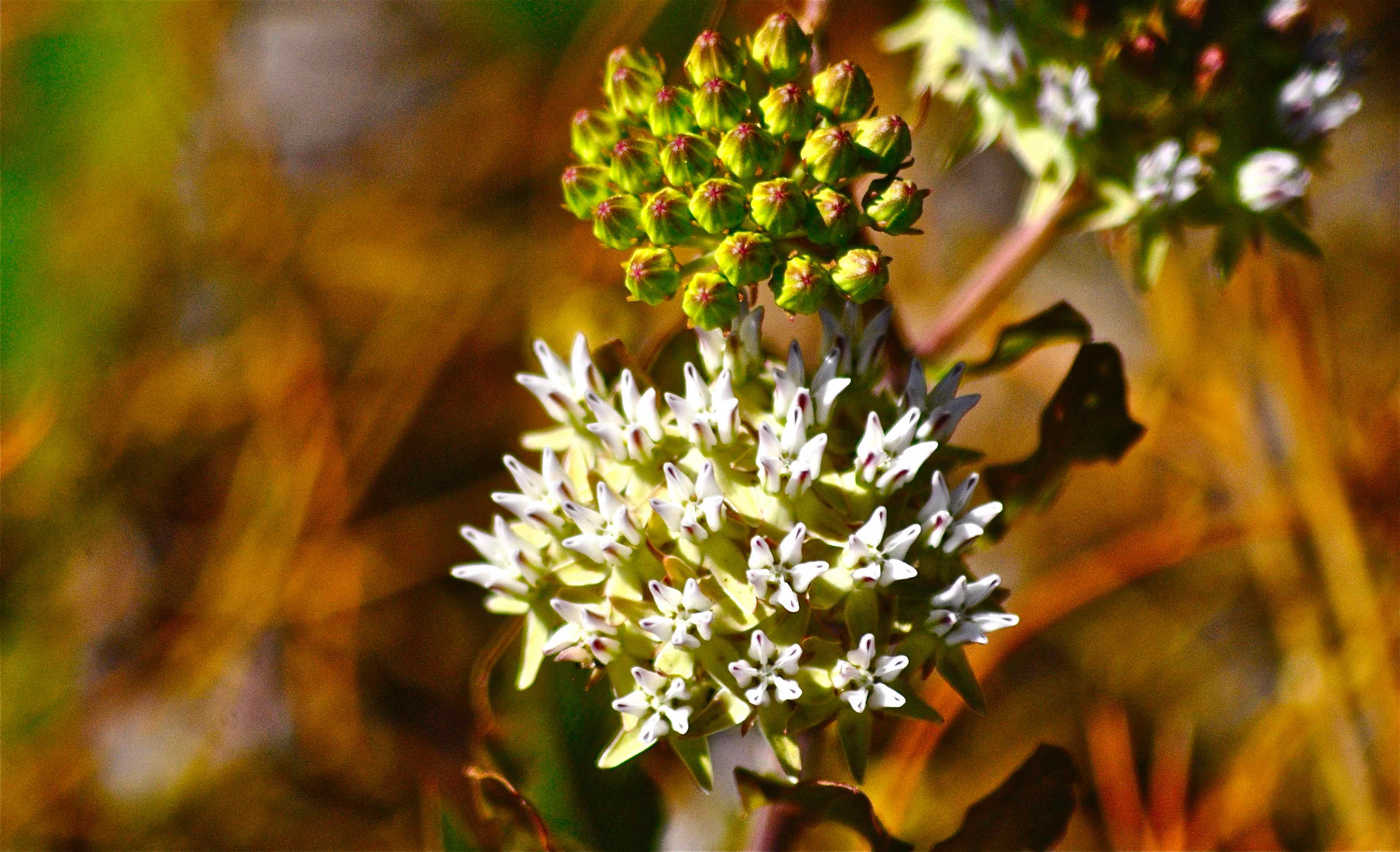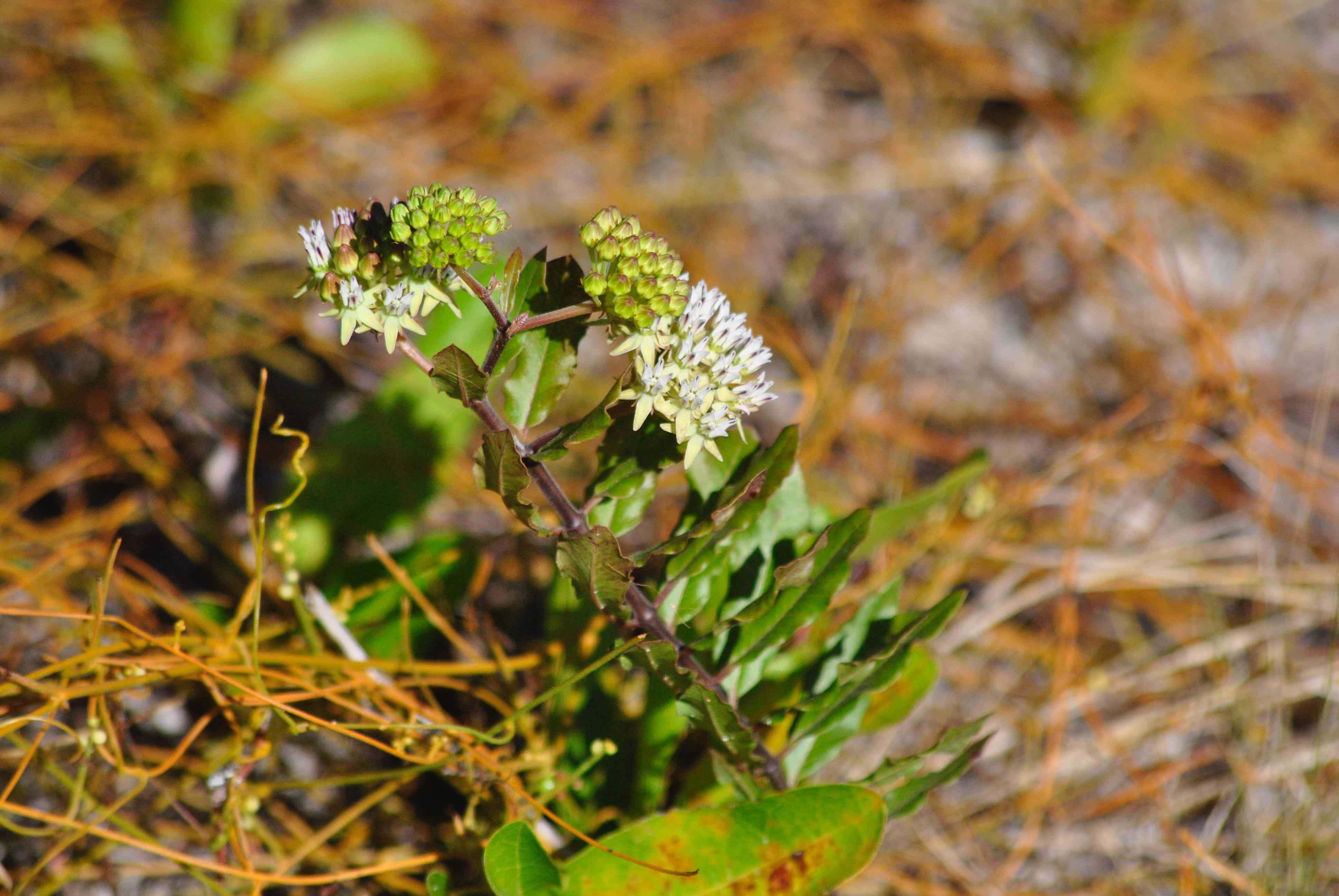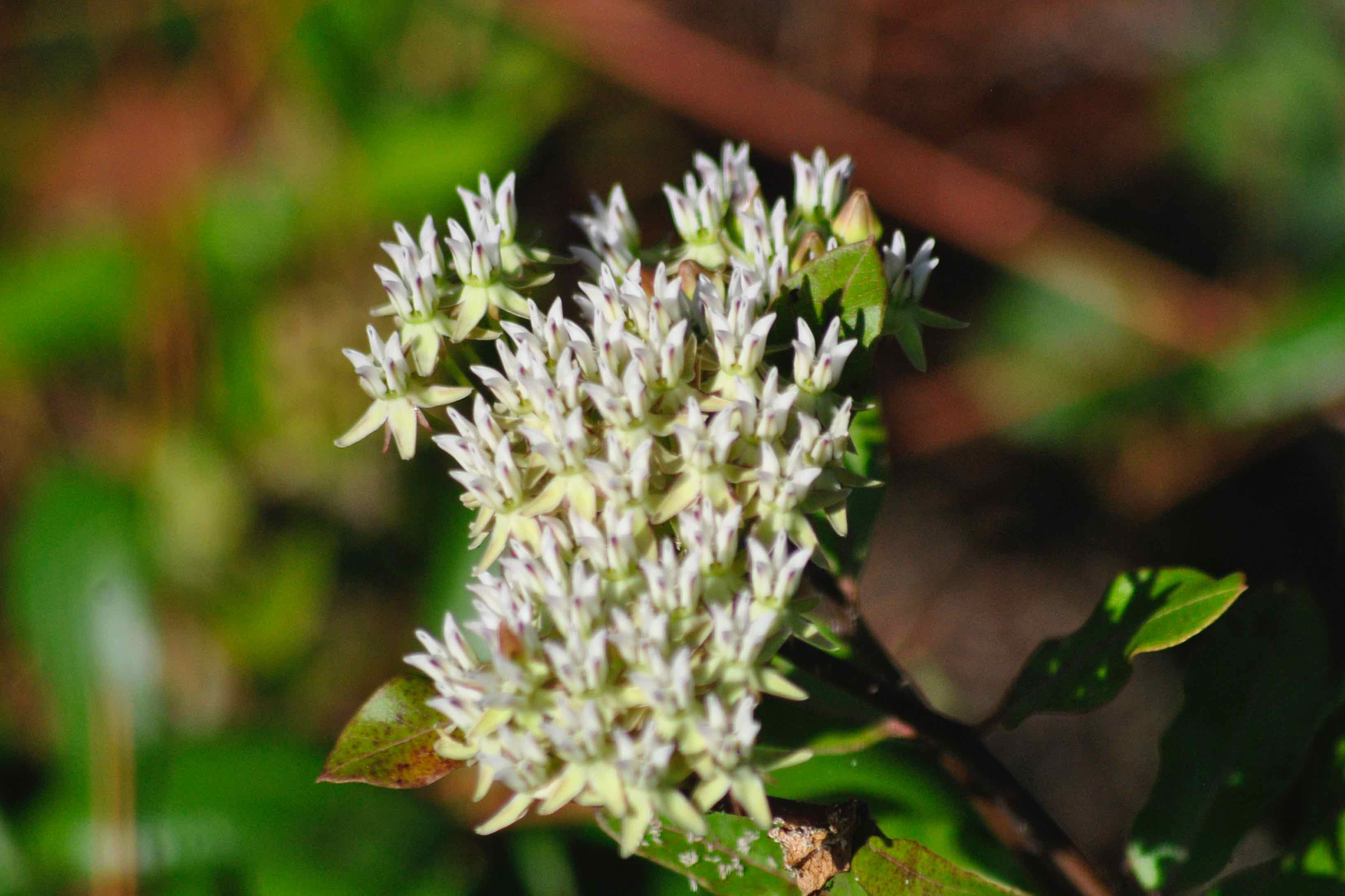
Curtiss' Milkweed, photographed at Lantana Scrub Natural Area, Lantana, Palm Beach County, June 2015.
In many ways, the odds seem stacked against the long-term survival of Curtiss' milkweed, Asclepias curtissii. It lives only in scrub, a habitat that is becoming increasingly rare. It doesn't reproduce well, and it seems to be on the menu for a long of critters.
So there's good reason why Curtiss's milkweed sits on Florida's endangered list. But it does have one thing going for it: Curtiss' milkweed is one tough plant. It's a survivor. Has to be.
Curtiss' milkweed is a Florida native. In fact, it only grows in Florida. Officially, it's found in 26 counties in Central and South Florida — as far north as Clay, as far south as Broward and Collier.
It is a small, and for most of the year, inconspicuous plant. It dies back every in winter, but scientists don't know when it resprouts because it's a hard plant to find when not in bloom. On top of that, it doesn't necessarily resprout every year. Younger plants tend to have a single, woody upright stem; older plants can have a vine-like sprawl. Leaves are dark green, arranged opposite on the stem and are wavy on the edges. When Curtiss' milkweed flowers, in summer, it's a hard plant to miss.
Generally, there won't be more than one plant growing at a site. In part, it's because it plain doesn't reproduce well. It doesn't produce many seeds, and those that it does produce need the right conditions in order to germinate — well-drained sandy soil, a disturbed, or cleared, site and lots of sun. It doesn't spread by sending out new shoots or via cuttings.
Like other milkweeds, it contains cardenolides, poisons that usually deter browsing. In Curtiss's milkweed, however the levels of cardenolides are low, not enough to stop a hungry deer, for example. But it is tough. An established plant can live for 25 years or more. Clip it down to the ground and it will regrow. Curtiss' milkweed will bounce back, thanks to a deep taproot. Its strategy is to devote more energy to survival, less to reproduction.
There's also some question about exactly how rare Curtiss' milkweed really is. It can remain dormant year to year — you might find a plant this season but not next, only to see it return the following year. In one study done in the 1980s, the locations of 32 plants were marked, nine of which could not be found the following year. It wasn't known at the time whether plants had died or just gone dormant.
Curtiss' milkweed, like other milkweed, have been generally considered members of Asclepiaceae, the milkweed family. However, in recent years, Curtiss' and other milkweed have been placed in Apocynaceae, the dog bane family.
Click on photo for larger image
Links for Curtiss' Milkweed



